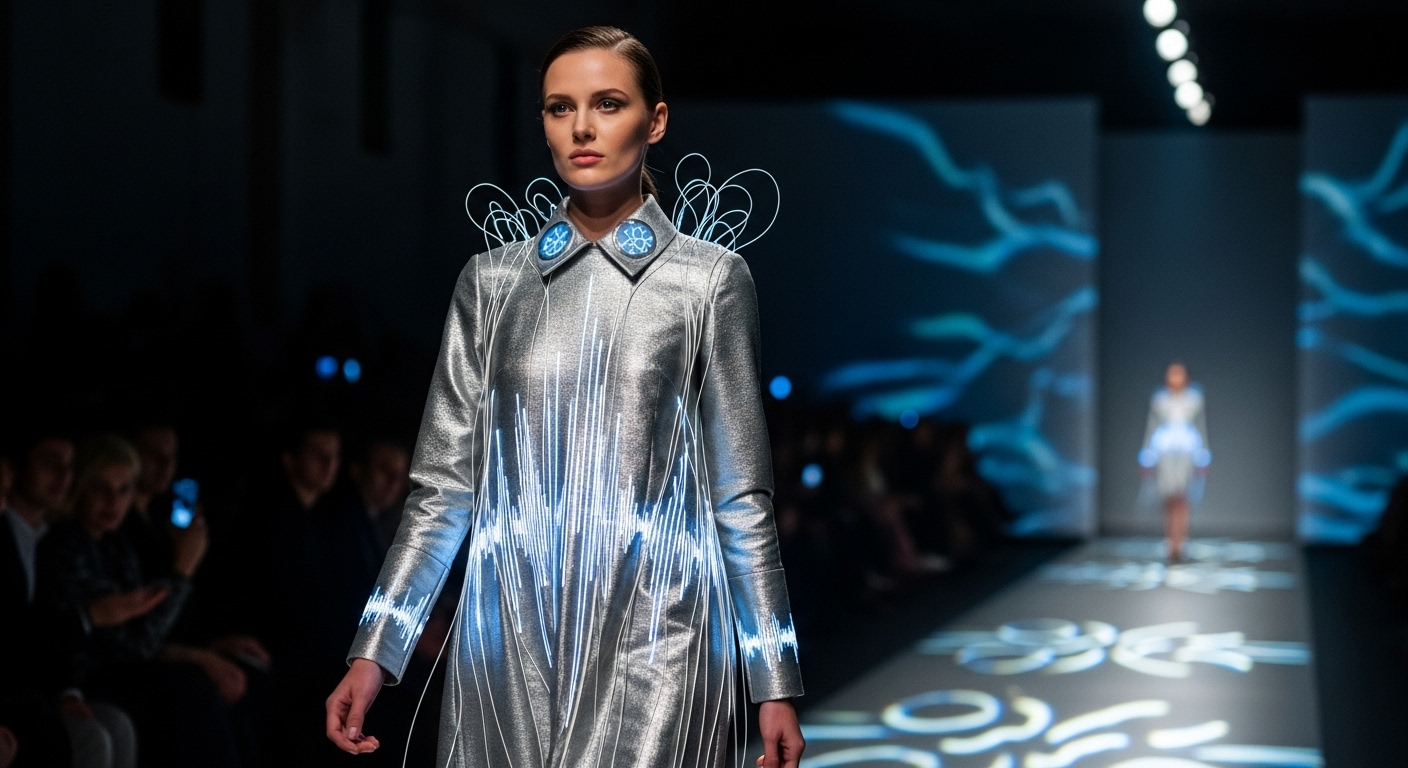Holographic Couture: Fashion's Digital Frontier
In the ever-evolving landscape of haute couture, a revolutionary trend is reshaping the runway and redefining the boundaries of wearable art. Holographic fashion, once confined to the realm of science fiction, has emerged as a cutting-edge medium for designers to push the limits of creativity and technology. This fusion of digital innovation and sartorial vision is not merely a fleeting gimmick but a transformative force that promises to reshape the fashion industry from design to retail.

From Runway to Reality
The first major holographic fashion show debuted in 2012, featuring ethereal designs that seemed to float and shift as models walked. This watershed moment captured the attention of the fashion world and tech enthusiasts alike. Since then, designers have pushed the boundaries further, creating garments that change color, pattern, and even shape in real-time, responding to the environment or the wearer’s movements.
The Technology Behind the Shimmer
At the heart of holographic fashion lies a complex interplay of advanced technologies. Micro-LED arrays, programmable fabrics, and augmented reality interfaces come together to create garments that are as much digital as they are physical. These pieces often incorporate sensors that allow them to react to touch, temperature, or sound, creating an interactive experience that blurs the line between wearer and worn.
Sustainability and the Digital Wardrobe
One of the most compelling aspects of holographic fashion is its potential to address sustainability concerns in the industry. By allowing a single garment to transform its appearance infinitely, it reduces the need for multiple physical items. This digital wardrobe concept could significantly decrease textile waste and the environmental impact of fast fashion.
The Future of Retail and Personal Expression
As holographic fashion technology becomes more accessible, it’s poised to revolutionize not just high-end couture but everyday wear as well. Imagine a world where your outfit can change to suit your mood or the occasion at the touch of a button. This level of personalization and flexibility could fundamentally alter how we think about and interact with our clothing.
Challenges and Ethical Considerations
Despite its promise, holographic fashion faces several hurdles. The technology is still expensive and energy-intensive, limiting its widespread adoption. There are also concerns about privacy and data security, as these interactive garments collect and process personal information. As the field evolves, designers and technologists must grapple with these ethical implications.
A New Canvas for Creativity
For artists and designers, holographic fashion represents an exciting new medium for expression. It allows for dynamic, living artworks that can evolve and respond in ways traditional textiles never could. This opens up unprecedented possibilities for narrative and interactive fashion experiences that engage viewers on multiple sensory levels.
The Intersection of Fashion and Performance Art
Holographic couture is blurring the lines between fashion and performance art. Fashion shows incorporating these pieces become immersive spectacles, more akin to cutting-edge theater or digital art installations than traditional runway events. This convergence is attracting a new audience to fashion, bridging the gap between technology enthusiasts and style aficionados.
Democratizing High Fashion
As with many technological innovations, what begins as a high-end luxury may eventually become accessible to the masses. The democratization of holographic fashion could lead to a new era of self-expression, where individuals can constantly reinvent their look without the need for an extensive physical wardrobe. This shift could have profound implications for personal identity and social dynamics in the digital age.
In conclusion, holographic fashion stands at the vanguard of a sartorial revolution, promising to reshape our relationship with clothing and self-expression. As the technology matures and becomes more widespread, we can expect to see its influence extend far beyond the runway, potentially transforming everyday life in ways we’re only beginning to imagine. The fusion of digital artistry and wearable technology heralds a new chapter in fashion history, where the only limit is the designer’s imagination and the wearer’s desire for innovation.





